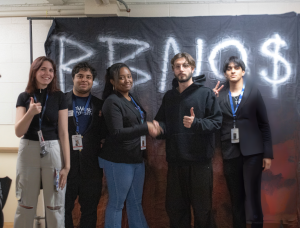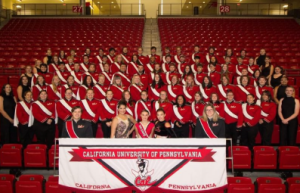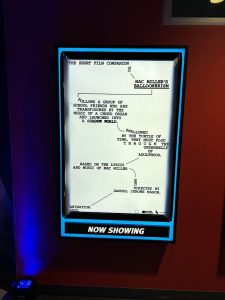A message from the CFO of SAI on the budget

April 3, 2018
The task of dividing up nearly one million dollars amongst student clubs and organizations is not an easy one. How can you compare clubs when each is unique in its own way? How do you decide to give $500 to one and then $200,000 to another? What makes one club more deserving than another? Why was my club funding decreased?
All of these questions plus many more are asked by students all the time so let me do my best to explain how the process works.
Student Cabinet is formed in September of each fall semester and is made up of 19 students. Each member is assigned five to six clubs and organizations that they are not affiliated with to represent during the budget process. Members are encouraged to reach out to each club and become familiar with the club and its activities.
Budget forms are opened in Orgsync at the end of the fall semester and clubs have over two months to complete them. Once submitted, the budget form, roster, and current club financial report is given to each Cabinet representative to review. There is a four-week window of opportunity for Cabinet reps to learn as much as they can about each club assigned to them before the budget meeting.
Sometimes Cabinet members meet with the club officers or attend meetings and sometimes it is communication via email. Let’s remember these are students who have a lot going on and they do their best to get as much information as their schedule permits.
On Saturday, March 24, the members of Student Cabinet arrive at the SAI Farmhouse at 7:45 am to grab some breakfast before the meeting begins. A projector is used to display the working document used during the meeting as club allocation amounts are discussed.
As CFO, I also provide historical financial data, unspent allocation dollars and penalties, special allocation requests, fundraising efforts, and the current club financial reports.
Round one begins in alphabetical club order. If a club submitted a statement to Cabinet, I read it to the group prior to discussion. Then the Cabinet representative for the club presents the club’s budget request for consideration along with the amount of funds they believe are needed for the club to operate in 2018-19. There is no discussion in round one. It is strictly the Cabinet representative talking about the club.
Round two is typically the longest. Again, it is alphabetical order by club name and a motion to amend the amount given by the Cabinet representative in round one is made with a second, and then discussion begins. Each club is only discussed one time during this round and amounts typically are reduced.
Members ask to bring up the club history on the screen, they look at current financial reports and question how the club plans on spending large amounts of carryforward in their account or what they have planned to spend the remaining allocated dollars in their account, they question why a club has returned allocated funds in the past and if so, why do they need an increase, and various other questions.
Every club is talked about in great detail and the Cabinet member representing the club answers the majority of the questions and sometimes others assist.
I have been doing this now for 10 years and I can say without hesitation, that the discussion this year was the best I have ever witnessed at the budget meeting.
Once round two ends, a short break is taken for members to review the current amounts each club has been given. There is a maximum amount of allocation dollars set by the SAI Board of Directors. The total allocation dollars of all clubs and organizations added together cannot be over that set amount.
Round three begins in alphabetical order by club again and it is typically the last chance for a Cabinet representative to fight for a club to get more money. Of course, there are always discussions at great lengths on those clubs with large dollar amounts in every round. However, this year it was amazing at how much discussion took place on the smaller clubs with amounts of $1,000 or less. Round three is the “battle round,“ with good debate and tough decisions and in the end, it is the most memorable for the Cabinet members.
Round three ends and Cabinet members are given a final print out of the total allocation awards for all clubs and organizations with a short break to review. When the fourth and final round opens, Cabinet members are given one final chance to make a motion on any club they wish to see a different amount given to.
This year, there was only one club discussed prior to the final vote indicating that members were content with the distribution of the allocation awards to each club. When the final vote was taken, the motion to approve the 2018-19 allocated budget in the amount of $907,263 passed by a vote of 10-2.
Student Government passed the proposed budget on March 26, and on Monday, April 9, at 4:15 p.m. in the Performance Center, SAI will hold its annual Corporation Meeting which is the final step in the budget process.
All members of the SAI Corporation (all full-time undergraduate SAI fee-paying students) get a vote to approve or reject the budget. Only voting members of the SAI Corporation are permitted at this meeting. Nominations for the 2018-19 SAI Board of Directors will also take place at this meeting. You will need your CalCard to verify eligibility prior to entering the meeting.
As the Advisor of Student Cabinet for the past 10 years, I have seen quite the evolution of the budget meeting. Students change each year and the process must adapt to those changes. I think the students did a tremendous job this year as the discussion of each club was very informative and I am very proud of their efforts.
After a 10 hour meeting, the budget presented takes into account organizations who vary in funding structure, campus impact, academics, competition, and a wide variety of other differences that only knowledge and analysis can decipher.
The numbers on the page mean nothing unless you know the story behind them, and they all have a story that was discussed. As Plato states, “a good decision is based on knowledge, not on numbers” and I can say with certainty, it was knowledge that led to the final numbers presented in the budget.





